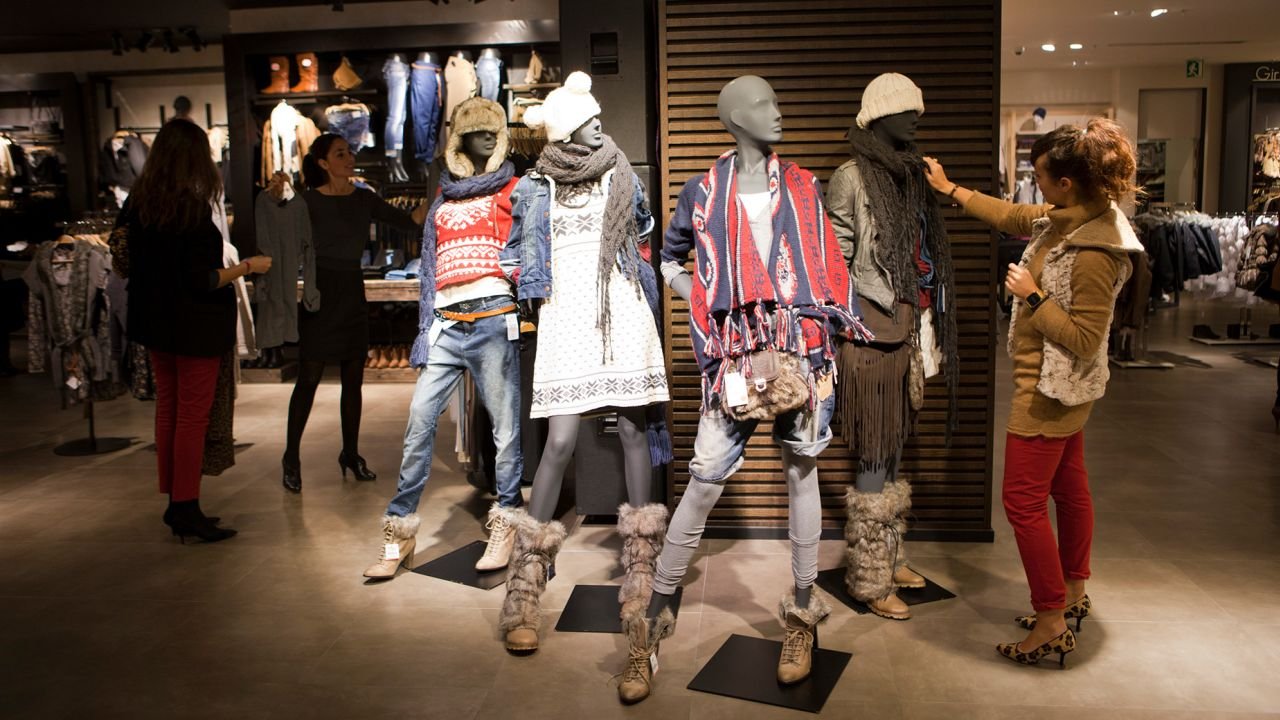In the bustling city of Lagos, Nigeria, a vibrant market known as Balogun Market thrived with activity. It was a place where fashion trends were born, and consumers’ habits were shaped by the allure of appearance. Among the regulars was Adaeze, a young woman with an impeccable sense of style. She was known for her keen eye for fashion and her ability to spot trends before they became mainstream.
Adaeze’s journey into the world of fashion began in her early teens. She had always been fascinated by the way clothes could transform a person’s appearance and, consequently, their confidence. Her mother, Chidinma, owned a small tailoring shop in the market. Adaeze spent countless hours there, watching her mother work her magic with fabrics and threads. This early exposure to fashion ignited a passion within her, and she dreamed of one day becoming a fashion designer.
As Adaeze grew older, she noticed how much importance people placed on appearance. In a society where first impressions mattered greatly, the way one dressed could significantly influence how they were perceived. This observation led her to delve deeper into understanding the psychology behind fashion choices.
One sunny afternoon, Adaeze sat in her mother’s shop, sketching designs in her notebook. Chidinma, busy stitching a colorful Ankara dress, glanced at her daughter. “Adaeze, what are you working on today?” she asked, her voice filled with curiosity.
“I’m trying to understand why people choose certain clothes,” Adaeze replied, her eyes never leaving her sketches. “It’s fascinating how appearance plays such a crucial role in our fashion habits.”
Chidinma nodded, her hands expertly guiding the fabric under the sewing machine. “Appearance is powerful. It can boost one’s confidence, make a statement, or even convey a message without words.”
This conversation stayed with Adaeze, and she decided to conduct her own informal research. She began by observing the diverse crowd that frequented Balogun Market. There were the young professionals, like her friend Kemi, who worked at a bank and always dressed in sharp, tailored suits. Kemi believed that dressing professionally not only made her feel more competent but also earned her respect from colleagues and clients.
On the other hand, there was Amina, a university student from Kano, who preferred comfortable yet stylish outfits. For Amina, fashion was a way to express her personality and creativity. She often mixed traditional Hausa attire with modern pieces, creating a unique and eye-catching look.
Adaeze also spoke with Chinedu, a trader from Aba, known for his extravagant taste in clothing. He wore bright colors and bold patterns, which he believed made him stand out and attract customers to his stall. “People remember me because of my clothes,” Chinedu explained. “It’s like free advertising.”
As Adaeze gathered more insights, she realized that while appearance played a significant role in fashion habits, the motivations behind it varied greatly. For some, like Kemi, it was about professionalism and respect. For others, like Amina and Chinedu, it was about self-expression and attracting attention.
Intrigued by these findings, Adaeze decided to take her research further. She reached out to her cousin, Zainab, who lived in Cape Town, South Africa. Zainab was a fashion blogger with a substantial following on social media. Adaeze hoped to gain a broader perspective by learning about fashion habits in a different African region.
Zainab welcomed the opportunity to share her knowledge. “In Cape Town, fashion is very eclectic,” she said during one of their video calls. “People here are influenced by a mix of local and international trends. Appearance is crucial, especially with the rise of social media. Everyone wants to look their best in photos.”
Zainab introduced Adaeze to a few of her friends, including Thabo, a graphic designer, and Nandi, a boutique owner. Thabo’s style was minimalist, favoring clean lines and neutral colors. He believed that simplicity in fashion reflected clarity in thought. Nandi, on the other hand, loved vibrant, colorful outfits that celebrated her Xhosa heritage. For her, fashion was a way to honor her culture and make a statement about her identity.
As Adaeze compared the fashion habits of people from different African regions, she noticed common threads. Regardless of the specific motivations, appearance was a powerful tool for communication. It could convey professionalism, creativity, cultural pride, or even a sense of belonging.
Inspired by her findings, Adaeze decided to channel her passion for fashion into a career. She enrolled in a fashion design program in Lagos, determined to create clothing that not only looked good but also made people feel good. Her goal was to design pieces that catered to various motivations behind fashion choices, whether it was for professional purposes, self-expression, or cultural celebration.
Years later, Adaeze’s dream became a reality. She launched her own fashion line, “Adorn by Adaeze,” which quickly gained popularity across Nigeria and beyond. Her designs were a blend of traditional African elements and modern trends, appealing to a wide audience. Adaeze’s success was not just about creating beautiful clothes; it was about understanding the role of appearance in people’s lives and designing with that knowledge in mind.
Adaeze’s journey from a curious observer in her mother’s tailoring shop to a successful fashion designer was a testament to the power of appearance in shaping consumers’ fashion habits. Through her work, she celebrated the diversity of motivations behind fashion choices and created a brand that resonated with people from different walks of life.
In the end, Adaeze’s story highlighted a universal truth: fashion is more than just clothing; it’s a reflection of who we are, how we feel, and how we want to be seen. Whether in the bustling markets of Lagos, the stylish streets of Cape Town, or anywhere else in the world, the role of appearance in consumers’ fashion habits remains a fascinating and ever-evolving phenomenon.








